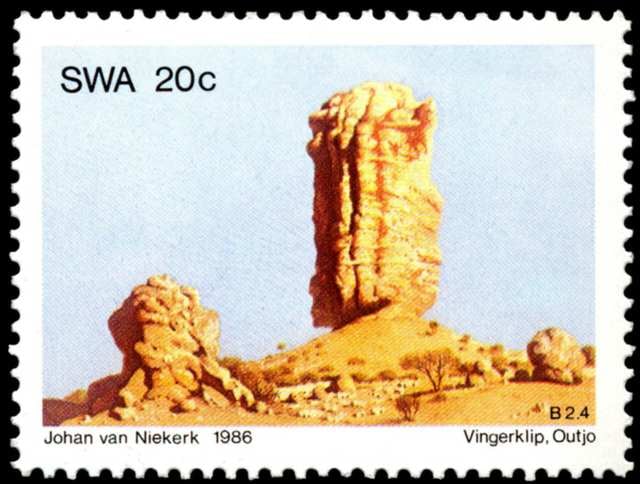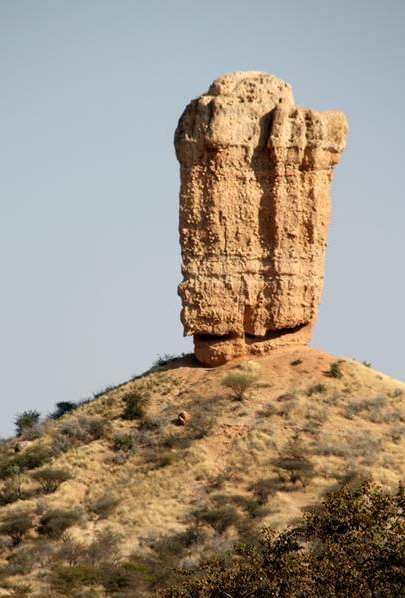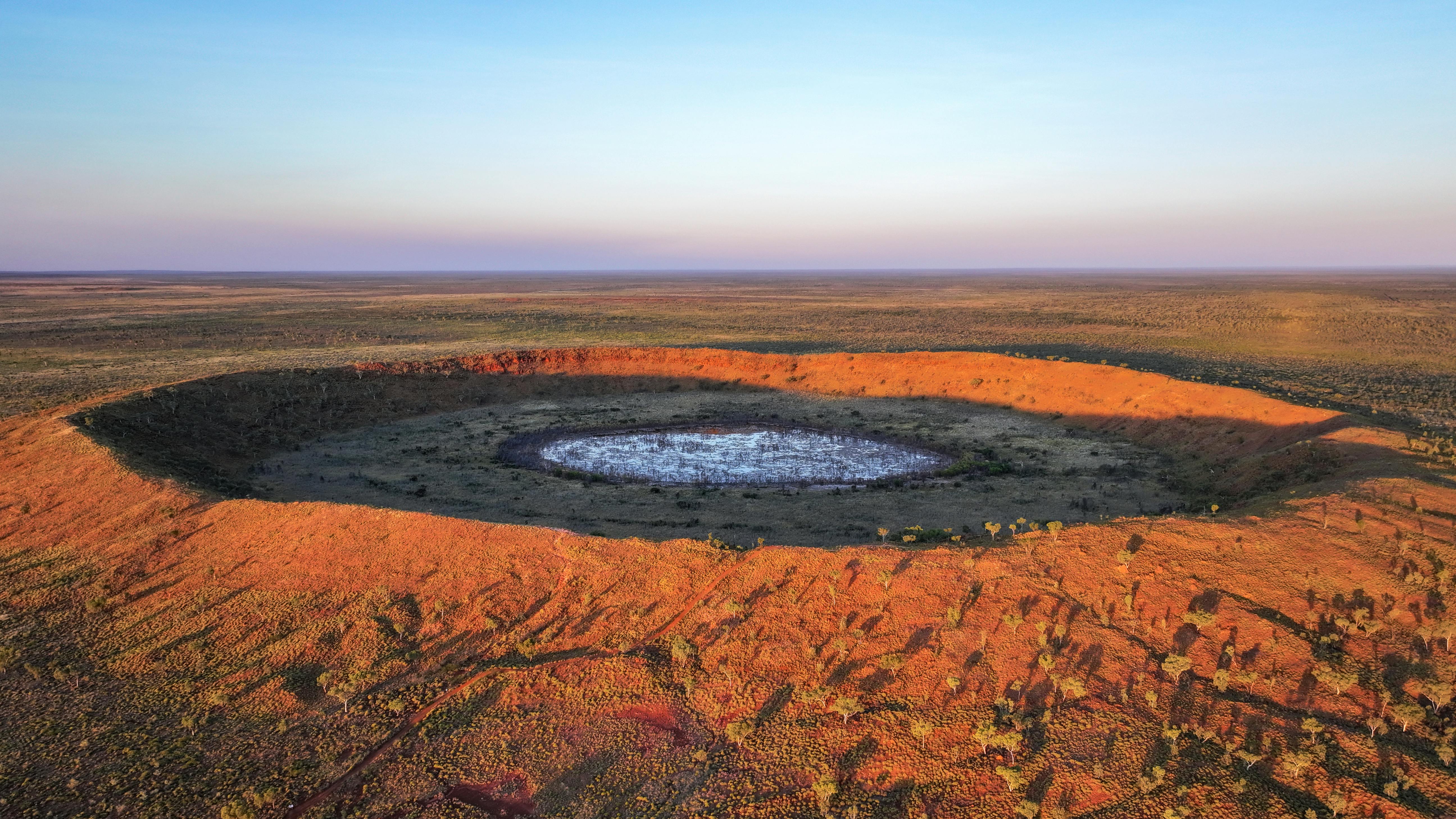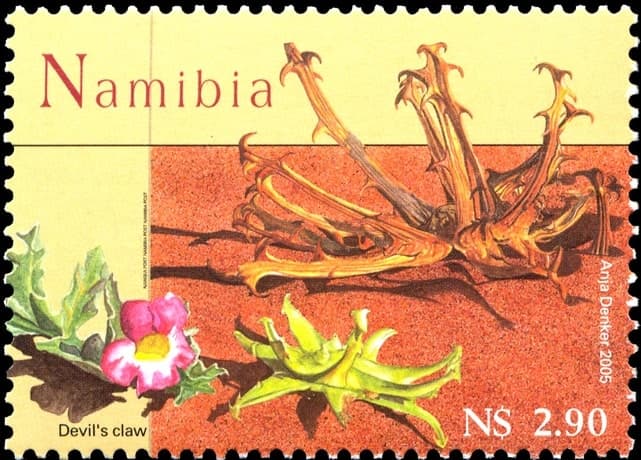From close by it resembles a climbing wall for free climbers: Vingerklip is 35 metres high, about 15 metres wide and dotted with protruding stones. In 1973 the rock stack in the valley of the seasonal Ugab River, some 40 km east of Khorixas, was indeed conquered in free climbing manner by Udo Kleyenstuber, who ascended on its east side. The hooks which can still be seen were left by American mountaineer Tom Choate who is credited with the first ascent of Vingerklip in 1970.
For geologists, on the other hand, the erosional rock formation is like a book in which they can read stories that happened millions of years ago and shaped this landscape. They are captivating stories about sea levels dropping and rising, wet and dry phases of the climate, torrential rivers, chalky soil and rivulets that cause rocks to split. Even laypersons will notice that Vingerklip consists of different layers – layers of large stones alternate with layers of fine sand. They testify to the fact that at times the Ugab flowed rapidly enough to drag rocks with it, while at others it was so sluggish that sand was deposited in its bed.
Knowing this much it already becomes clear that it was the Ugab River that sculpted Vingerklip. These days a seasonal river which comes down in flood only after sufficient rainfalls, the Ugab rises in the western foothills of the Otavi Mountains, then passes south of Outjo and north of Brandberg Mountain to reach the Atlantic Ocean about 180 km north of Swakopmund.
Some 120 million years ago, as the southern supercontinent of Gondwana breaks up and South America drifts away, the southern African plate rises and so does its gradient to the sea level. Thus the erosional force of the rivers increases further. Southwest of Outjo the Ugab cuts its course deeper and deeper into the rock. Then, towards the end of the ice age 20 to 10 million years ago, the sea level rises again and a wetter climate prevails. The Ugab River fills the valley, which it created earlier, with rocks and sand. Layer is deposited upon layer, up to a height of 100 m.
Two million years ago, during the ice age in the northern hemisphere, the sea level drops again and the Ugab once more cuts deep into its course which it previously filled with rocks and sediments. Parts of the wide riverbed fall dry. As the water evaporates, minerals precipitate – most of all lime because the Ugab and its tributaries drain the soil west of the Otavi Mountains and around Outjo which contains carbonate. The precipitated lime works like cement and binds rocks and sand into a conglomerate which is as hard as concrete. The deeper the river cuts into its original bed the narrower it becomes, forming several terraces over time.
The 'cement' in the conglomerate, i.e. the lime, is dissolved again by rain. This results in rivulets and streams which gradually cut into the terraces as if they were a cake. Erosion continues to gnaw on the edges of these pieces of cake, causing them to shrink and the gaps between them to widen as time passes. Vingerklip is the remainder of one such piece of cake, albeit not the only one: from its base another two, larger terrace islands can be seen in the Ugab Valley.
Furthermore, three different terraces can be distinguished. There is the 'old' main terrace, the plateau of which now rises some 160 m above the current riverbed, while the surface of a younger terrace lies about 100 m and that of the youngest one some 30 m above the Ugab.
Since this area does not experience much rain, chances are that Vingerklip will remain for years to come. It sits on a sound wide base with a circumference of 44 metres - in contrast to the Finger of God in southern Namibia, which collapsed in December 1988.







SUBMIT YOUR COMMENT